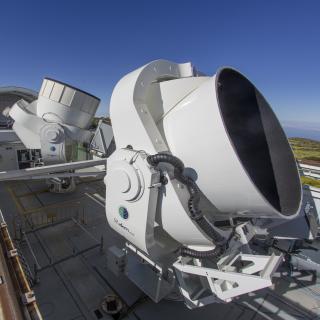Bibcode
Castillo, Andrés; Martin-Camalich, Jorge; Terol-Calvo, Jorge; Blas, Diego; Caputo, Andrea; Génova Santos, Ricardo Tanausú; Sberna, Laura; Peel, Michael; Rubiño-Martín, Jose Alberto
Bibliographical reference
Journal of Cosmology and Astroparticle Physics
Advertised on:
6
2022
Citations
18
Refereed citations
16
Description
The polarization of photons emitted by astrophysical sources might be altered as they travel through a dark matter medium composed of ultra light axion-like particles (ALPs). In particular, the coherent oscillations of the ALP background in the galactic halo induce a periodic change on the polarization of the electromagnetic radiation emitted by local sources such as pulsars. Building up on previous works, we develop a new, more robust, analysis based on the generalised Lomb-Scargle periodogram to search for this periodic signal in the emission of the Crab supernova remnant observed by the QUIJOTE MFI instrument and 20 Galactic pulsars from the Parkes Pulsar Timing Array (PPTA) project. We also carefully take into account the stochastic nature of the axion field, an effect often overlooked in previous works. This refined analysis leads to the strongest limits on the axion-photon coupling for a wide range of dark matter masses spanning 10-23 eV ≲ ma ≲ 10-19 eV. Finally, we survey possible optimal targets and the potential sensitivity to axionic dark-matter in this mass range that could be achieved using pulsar polarimetry in the future.
Related projects

Anisotropy of the Cosmic Microwave Background
The general goal of this project is to determine and characterize the spatial and spectral variations in the temperature and polarisation of the Cosmic Microwave Background in angular scales from several arcminutes to several degrees. The primordial matter density fluctuations which originated the structure in the matter distribution of the present
Rafael
Rebolo López

QUIJOTE CMB Experiment (Q-U-I JOint TEnerife CMB Experiment)
QUIJOTE es un programa de dos telescopios y su batería de instrumentos, instalados en el Observatorio del Teide, dedicados fundamentalmente a la caracterización de la polarización del Fondo Cósmico de Microondas, en el rango de frecuencias de 10-42 GHz.
José Alberto
Rubiño Martín